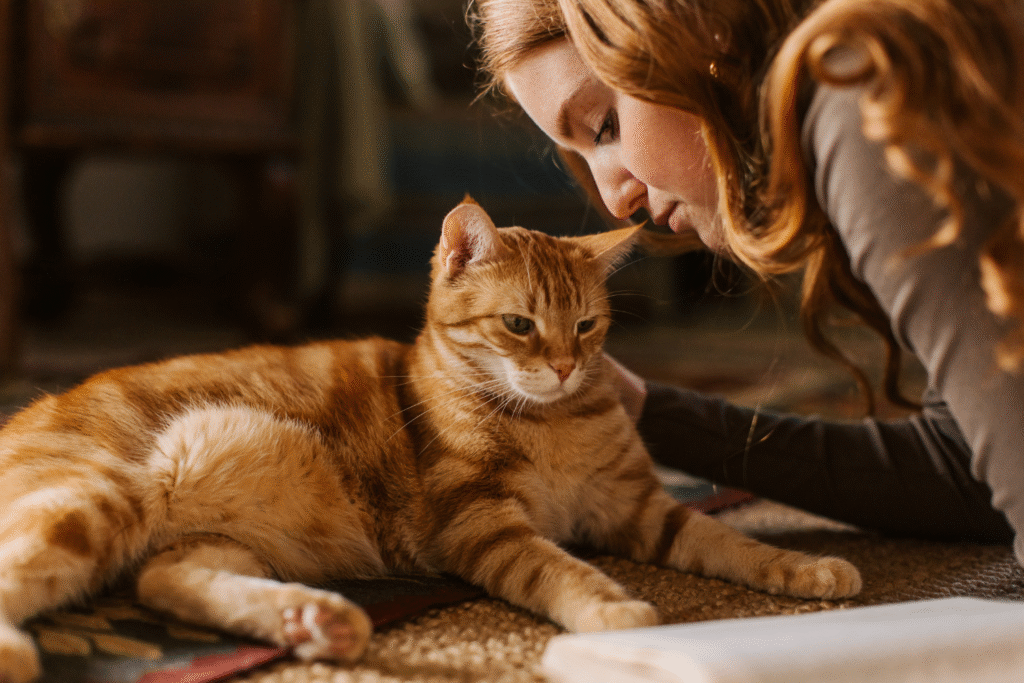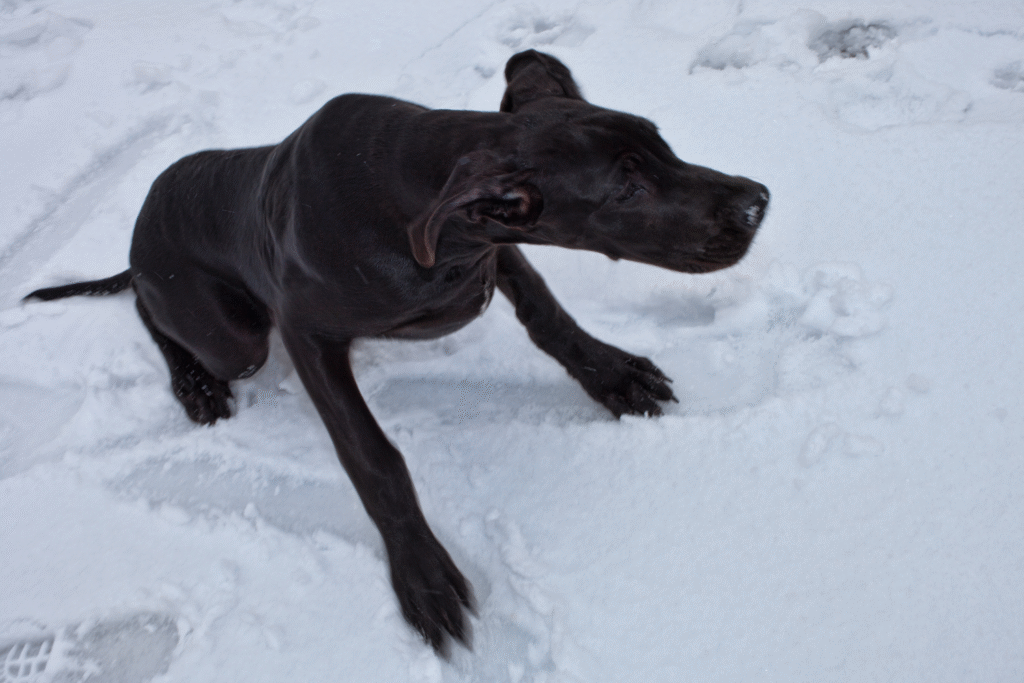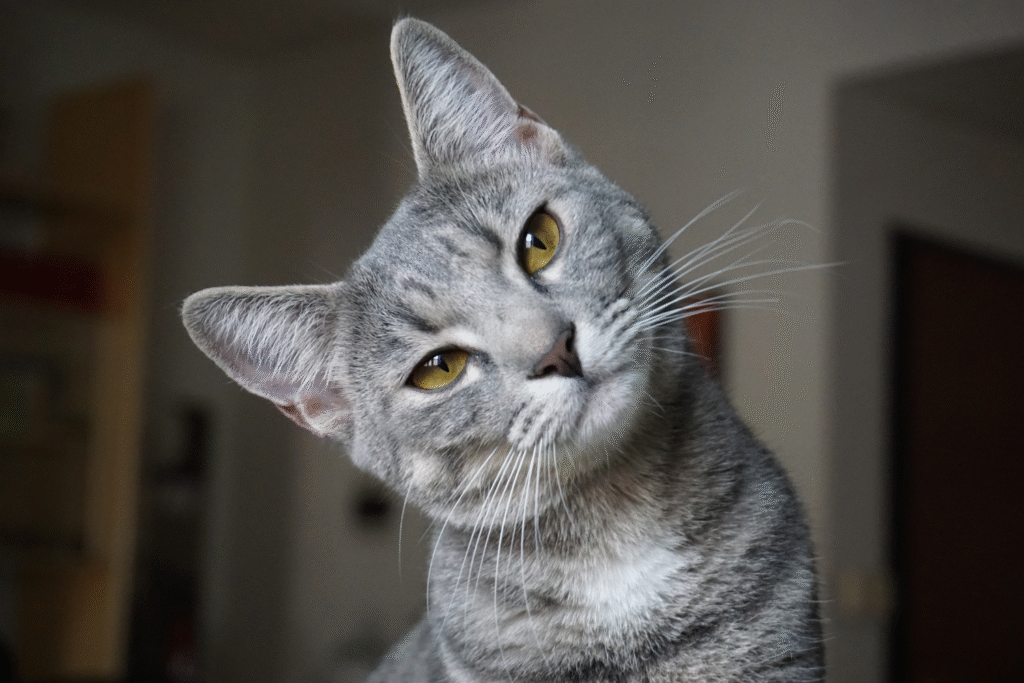Your dog or cat may look fine, but small shifts in their world show the truth long before you notice.

Pets age quietly, and the signs are often hiding in plain sight. It’s not sudden or dramatic—it’s subtle, like ignoring a dropped toy or hesitating before climbing stairs. Indoor pets in particular can mask sensory loss for years, because their environment rarely changes. Familiar smells, sounds, and layouts help them cope, which means owners often miss what’s really happening. But behind that calm exterior, their senses are fading one by one. The clues are there if you know how to catch them.
1. Hearing fades long before they stop responding to you.

Dogs and cats often begin losing high-frequency hearing years before owners notice. According to the American Veterinary Medical Association, the process is gradual and easy to dismiss as stubbornness or distraction. A pet might still hear the clang of food hitting a bowl but miss your softer voice calling from across the room.
Over time, the signs stack up—less reaction to doorbells, confusion in noisy environments, or a startle when approached from behind. Indoor pets hide it better since their routines rarely demand sharp hearing. But the silence in their world grows, and you see it only in hindsight once the loss is obvious.
2. Their eyesight dims in ways you brush off as clumsiness.

It starts with hesitations at night or bumping into a chair they’ve walked past a thousand times. As stated by PetMD, age-related vision decline creeps up slowly, often mistaken for simple quirks. Indoor pets adapt by memorizing layouts, which is why many owners overlook the early signs entirely.
A cat may stop leaping to high places it once conquered effortlessly. A dog may circle before finding the doorway. It feels like personality shifts, but really it’s their world getting fuzzier. Because the house rarely changes, they compensate beautifully—until the decline reaches a point no adaptation can hide.
3. The nose doesn’t quit, but it does lose its edge.

Scent is a lifeline for pets, but even noses eventually dull. Reported by the American Kennel Club, aging dogs show reduced sensitivity to smells, which can affect appetite and interest in play. For cats, diminished scent often shows up in how quickly they lose enthusiasm for meals.
It doesn’t vanish completely—just loses sharpness. Food that once made them sprint may barely get a glance. Favorite toys suddenly seem boring, not because they dislike them but because the familiar scents aren’t as strong. It’s a slow dimming of a superpower they once relied on daily.
4. Their balance shifts without anyone realizing it.

Pets rely on their inner ear for equilibrium, and when it begins to falter, they stumble more easily. A slip on the hardwood or a misjudged jump off the couch often looks like clumsiness. In reality, it’s their sense of balance slowly eroding with time.
Indoor spaces disguise this change because flat, familiar ground doesn’t challenge them as much as the outside world would. The decline creeps in gently, but eventually, even rugs or small steps can become obstacles. Owners usually notice only after repeated accidents point to something deeper.
5. Touch sensitivity becomes inconsistent as they age.

Whiskers, paw pads, and skin receptors all dull with time. Cats may stop noticing the brush of a toy feather, while dogs can seem indifferent to a light scratch they once loved. They feel, but not with the same clarity.
This change alters their behavior in subtle ways. Some become more jumpy because soft touches no longer register until pressure increases. Others withdraw because overstimulation feels overwhelming when their nerves don’t process sensation predictably. It’s a quiet decline that reshapes interactions more than most owners realize.
6. Taste loses some of its pull, making meals less exciting.

Food drives so much of a pet’s joy, but taste buds diminish as they age. Meals that once inspired frantic tail wags or headbutts may now receive a polite nibble. It’s not about disliking the food, it’s about the fading of their palate.
Indoor life makes this loss especially easy to miss. Owners often assume boredom with routine meals, rotating flavors or brands to spark interest. But the truth is the taste receptors aren’t as responsive, so meals simply don’t hit the same way anymore. That shift alters not just appetite but the excitement pets once poured into eating.
7. Subtle confusion sneaks in with fading senses.

As sight, hearing, and smell decline, pets sometimes appear disoriented in spaces they know well. They may stand at the wrong side of a door or wander into rooms they don’t usually enter. These small lapses aren’t always cognitive decline—they can be the result of diminished sensory input.
When the world doesn’t come through clearly, decision-making gets harder. What looks like forgetfulness is often sensory silence. Over time, the confusion blends with routine, leaving owners to wonder if it’s age, memory, or both. The truth usually lies in the middle.
8. Nighttime behavior gives away more than the daylight does.

Darkness exposes sensory loss in ways the day doesn’t. Pets that manage fine under sunlight struggle when the lights go out. Increased pacing, restlessness, or nighttime whining are red flags of vision or hearing loss.
These moments often feel like quirks of aging, but really they’re the environment revealing what daylight conceals. Watching how a pet behaves at night offers a clearer picture of their sensory health than any daytime habit ever could. The night strips away their coping mechanisms.
9. Social withdrawal often replaces their usual enthusiasm.

A pet who suddenly spends more time alone or hesitates to greet you at the door may be hiding sensory decline. It’s not disinterest—it’s self-preservation. When their world feels muffled, dulled, or blurred, social interactions take more effort.
Instead of running headlong into mistakes, they retreat to safety. That withdrawal can look like indifference, but it’s a defense against vulnerability. Recognizing it as a symptom rather than a personality shift reframes how you respond, offering compassion where frustration might have taken hold.
10. The silence of change lingers until the signs are undeniable.

Senses rarely disappear all at once—they fade piece by piece, often going unnoticed until the gaps grow too large to ignore. By the time most owners see the full picture, the decline has been underway for years.
The lesson is simple: pay attention earlier. Subtle signs, from missed cues to nighttime pacing, reveal the story long before the senses are gone. That awareness not only explains what’s happening but also allows you to support your pet through the quieter, gentler years with understanding rather than surprise.

146sou